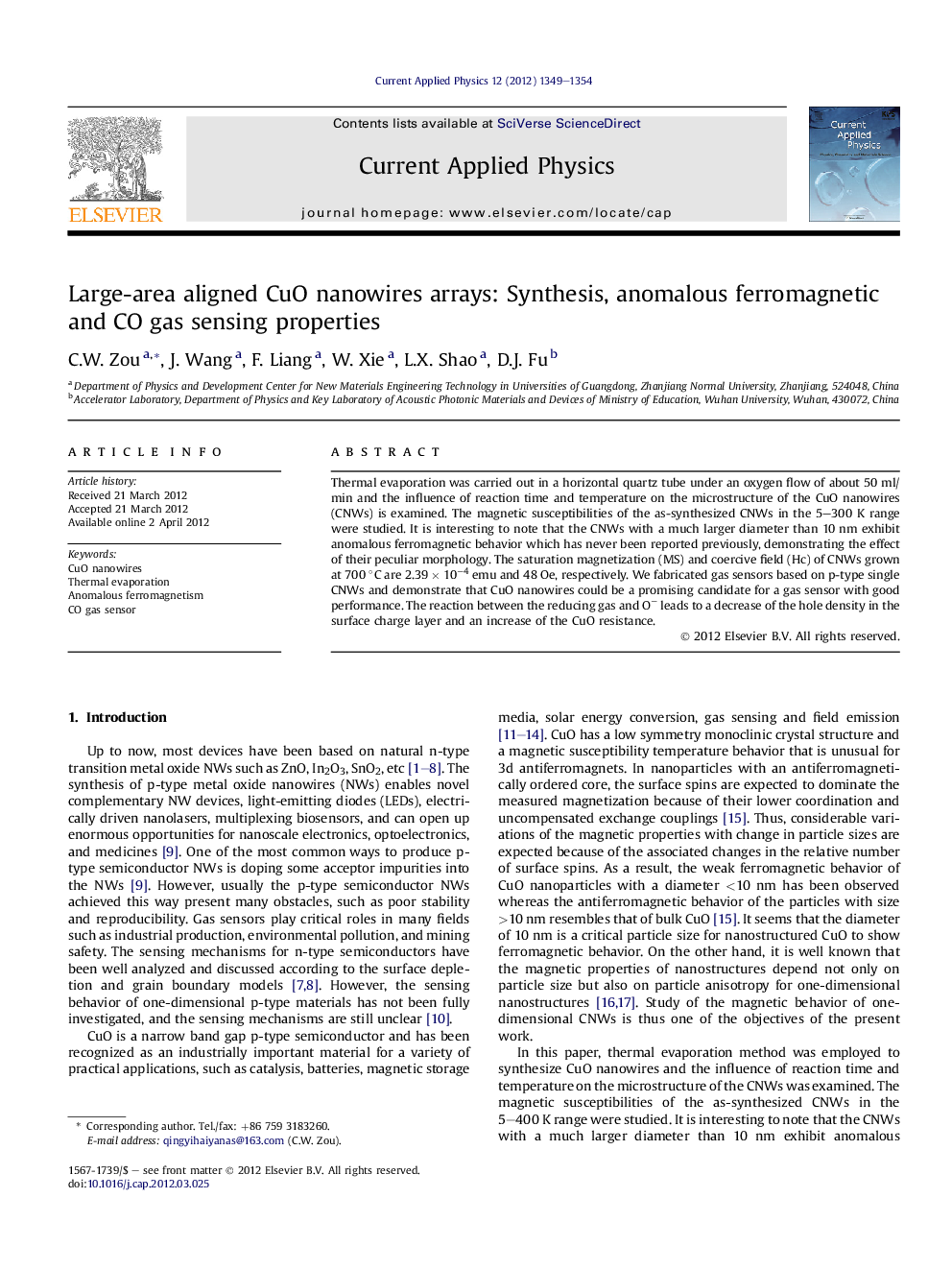| Article ID | Journal | Published Year | Pages | File Type |
|---|---|---|---|---|
| 1786746 | Current Applied Physics | 2012 | 6 Pages |
Thermal evaporation was carried out in a horizontal quartz tube under an oxygen flow of about 50 ml/min and the influence of reaction time and temperature on the microstructure of the CuO nanowires (CNWs) is examined. The magnetic susceptibilities of the as-synthesized CNWs in the 5–300 K range were studied. It is interesting to note that the CNWs with a much larger diameter than 10 nm exhibit anomalous ferromagnetic behavior which has never been reported previously, demonstrating the effect of their peculiar morphology. The saturation magnetization (MS) and coercive field (Hc) of CNWs grown at 700 °C are 2.39 × 10−4 emu and 48 Oe, respectively. We fabricated gas sensors based on p-type single CNWs and demonstrate that CuO nanowires could be a promising candidate for a gas sensor with good performance. The reaction between the reducing gas and O− leads to a decrease of the hole density in the surface charge layer and an increase of the CuO resistance.
► The influence of reaction time and temperature on the microstructure of the CuO nanowires (CNWs) is examined. ► Saturation magnetization and coercive field of CNWs grown at 700oC are 2.39 × 10−4 emu and 48 Oe, respectively. ► The reaction between the reducing gas and O− leads to a decrease of the hole density in the surface charge layer and an increase of the CuO resistance.
